Manalapan
(732) 845-0100
Manalapan (732) 845-0100

Athlete’s foot, or tinea pedis, is a skin disease caused by a fungal infection. The infection typically occurs between the toes, and the feet are most subject to this disease because shoes best create the warm, dark, and moist environment in which fungus thrives. Other areas that create a similar environment, such as swimming pools, public showers, and locker rooms; can also promote fungi growth.
Symptoms of athlete’s foot include dry skin, itching, scaling, inflammation, and blistering. Sometimes, blisters can evolve into the cracks or breaks in the skin. The exposed tissue can then create pain, swelling, and discharge. The spread of infection can cause itching and burning as well.
While athlete’s foot commonly occurs between the toes, it may also spread to the toenails or soles of the feet. Other parts of the body, such as the groin or underarms, can also become infected if they are touched after the original area of infection is scratched. Aside from physical contact, athlete’s foot can also spread through the contamination of footwear, clothing or bedsheets.
Proper foot hygiene is essential in preventing athlete’s foot. You can prevent the fungus from spreading by frequently washing your feet using soap and water, thoroughly drying the feet between the toes, changing shoes and socks every day to reduce moisture, and ensuring that bathroom and shower floors are disinfected. Other tips include using shower shoes, avoiding walking barefoot in public environments, wearing light and airy shoes, and wearing socks that keep the feet dry.
While treatment for athlete’s foot can involve topical or oral antifungal drugs, mild cases of the infection can be treated by dusting foot powder in shoes and socks. Any treatment used can be supplemented by frequently bathing the feet and drying the toes. If proper foot hygiene and self-care do not ease your case of athlete’s foot, contact your podiatrist. He will determine if the underlying cause of your condition is truly a fungus. If that is the case, a comprehensive treatment plan may be suggested with the inclusion of prescription antifungal medications.
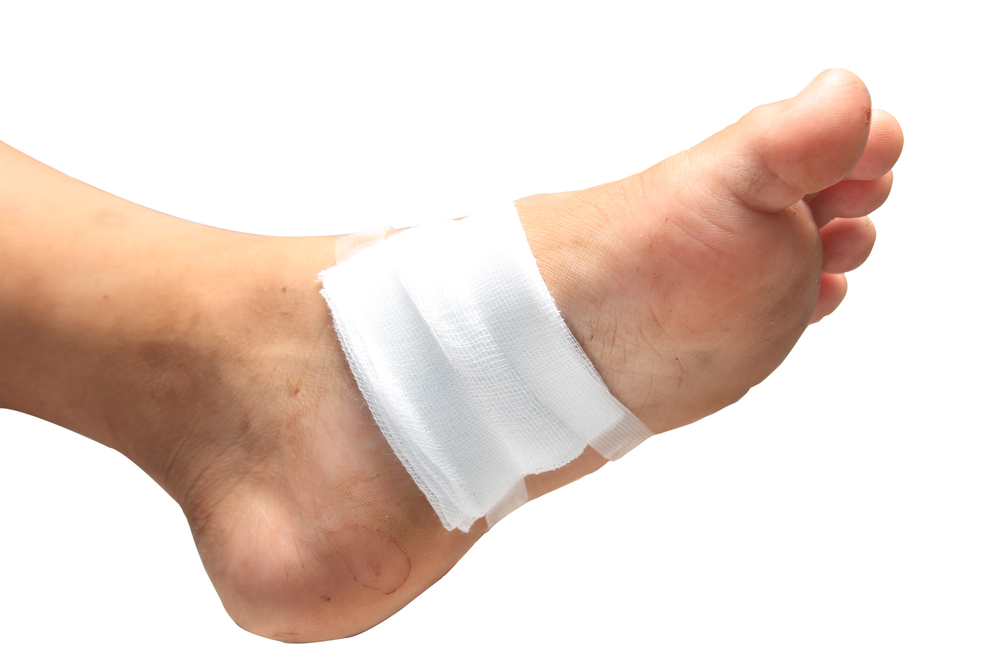 Research has indicated that approximately twenty-five percent of diabetic patients may develop a foot ulcer. This wound can easily become infected, and may be prevented if proper care is administered. This may include removing the infected tissue from the wound which may be helpful in initiating proper healing. If an infection develops, it is necessary to start treatment which may include specific antibiotics. To keep the infection from getting worse, it is important to cover the wound with dressings that are used to treat diabetic wounds. This may allow for proper drainage, and may also provide an adequate moisture environment for the wound. It may be beneficial for many patients to stay off the foot during the healing process. If you are afflicted with a foot ulcer, it is strongly recommended to seek the counsel of a podiatrist who can properly treat this condition.
Research has indicated that approximately twenty-five percent of diabetic patients may develop a foot ulcer. This wound can easily become infected, and may be prevented if proper care is administered. This may include removing the infected tissue from the wound which may be helpful in initiating proper healing. If an infection develops, it is necessary to start treatment which may include specific antibiotics. To keep the infection from getting worse, it is important to cover the wound with dressings that are used to treat diabetic wounds. This may allow for proper drainage, and may also provide an adequate moisture environment for the wound. It may be beneficial for many patients to stay off the foot during the healing process. If you are afflicted with a foot ulcer, it is strongly recommended to seek the counsel of a podiatrist who can properly treat this condition.
Wound care is an important part in dealing with diabetes. If you have diabetes and a foot wound or would like more information about wound care for diabetics, consult with Dr. Charles Marchese from Manalapan Foot & Ankle. Our doctor will assess your condition and provide you with quality foot and ankle treatment.
What Is Wound Care?
Wound care is the practice of taking proper care of a wound. This can range from the smallest to the largest of wounds. While everyone can benefit from proper wound care, it is much more important for diabetics. Diabetics often suffer from poor blood circulation which causes wounds to heal much slower than they would in a non-diabetic.
What Is the Importance of Wound Care?
While it may not seem apparent with small ulcers on the foot, for diabetics, any size ulcer can become infected. Diabetics often also suffer from neuropathy, or nerve loss. This means they might not even feel when they have an ulcer on their foot. If the wound becomes severely infected, amputation may be necessary. Therefore, it is of the upmost importance to properly care for any and all foot wounds.
How to Care for Wounds
The best way to care for foot wounds is to prevent them. For diabetics, this means daily inspections of the feet for any signs of abnormalities or ulcers. It is also recommended to see a podiatrist several times a year for a foot inspection. If you do have an ulcer, run the wound under water to clear dirt from the wound; then apply antibiotic ointment to the wound and cover with a bandage. Bandages should be changed daily and keeping pressure off the wound is smart. It is advised to see a podiatrist, who can keep an eye on it.
If you have any questions, please feel free to contact our office located in Manalapan, NJ . We offer the newest diagnostic and treatment technologies for all your foot care needs.
Diabetics must be wary of all wounds, regardless of depth or size. Diabetes, a chronic disease in which the body cannot properly use glucose the way it normally would, causes various complications that make wounds difficult to heal. Nerve damage or neuropathy will cause diabetics to have trouble feeling the pain of a blister or cut until the condition has significantly worsened or become infected. A diabetic’s weakened immune system can make even the most minor of wounds easily susceptible to infection. Diabetics are also more prone to developing narrow, clogged arteries, and are therefore more likely to develop wounds.
Wounds should be taken care of immediately after discovery, as even the smallest of wounds can become infected if enough bacteria build up within the wound. To remove dirt, wounds should be first rinsed under running water only. Soap, hydrogen peroxide, or iodine can irritate the injury and should be avoided. To prevent infection, apply antibiotic ointment to the wound and cover it with a bandage. The bandage should be changed daily. The skin around the wound may be cleaned with soap.
To prevent further exacerbation, see a doctor—especially if you have diabetes. Minor skin conditions can become larger problems if not properly inspected. As the wound heals, make sure to avoid applying pressure to the affected area.
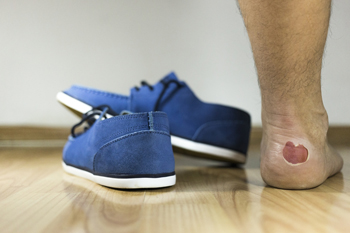 A blister that develops on the foot can be painful and uncomfortable. It is most likely caused by excessive friction that occurs in one area of the skin. The outer layer of the skin disintegrates, and a small pocket of fluid forms over the raw skin. This is the body’s natural defense mechanism to protect the damaged skin. There may be other reasons why blisters may develop. These may include an allergic reaction to a bee sting or insect bite. Additionally, if the skin is burned by flames or frostbite, blisters may form to possibly prevent infection. There may be existing medical conditions that can lead to the formation of blisters, including contact dermatitis, or eczema. It is important to leave the blister alone, and it may drain on its own when the raw skin has healed. If you have a blister on your foot that has become discolored or does not heal, it is suggested to speak to a podiatrist who can prescribe medication, if necessary.
A blister that develops on the foot can be painful and uncomfortable. It is most likely caused by excessive friction that occurs in one area of the skin. The outer layer of the skin disintegrates, and a small pocket of fluid forms over the raw skin. This is the body’s natural defense mechanism to protect the damaged skin. There may be other reasons why blisters may develop. These may include an allergic reaction to a bee sting or insect bite. Additionally, if the skin is burned by flames or frostbite, blisters may form to possibly prevent infection. There may be existing medical conditions that can lead to the formation of blisters, including contact dermatitis, or eczema. It is important to leave the blister alone, and it may drain on its own when the raw skin has healed. If you have a blister on your foot that has become discolored or does not heal, it is suggested to speak to a podiatrist who can prescribe medication, if necessary.
Blisters may appear as a single bubble or in a cluster. They can cause a lot of pain and may be filled with pus, blood, or watery serum. If your feet are hurting, contact Dr. Charles Marchese of Manalapan Foot & Ankle. Our doctor can provide the care you need to keep you pain-free and on your feet.
Foot Blisters
Foot blisters are often the result of friction. This happens due to the constant rubbing from shoes, which can lead to pain.
What Are Foot Blisters?
A foot blister is a small fluid-filled pocket that forms on the upper-most layer of the skin. Blisters are filled with clear fluid and can lead to blood drainage or pus if the area becomes infected.
Symptoms
(Blister symptoms may vary depending on what is causing them)
Prevention & Treatment
In order to prevent blisters, you should be sure to wear comfortable shoes with socks that cushion your feet and absorb sweat. Breaking a blister open may increase your chances of developing an infection. However, if your blister breaks, you should wash the area with soap and water immediately and then apply a bandage to the affected area. If your blisters cause severe pain it is important that you call your podiatrist right away.
If you have any questions, please feel free to contact our office located in Manalapan, NJ . We offer the newest diagnostic and treatment technologies for all your foot care needs.
Blisters are pockets of fluid that occur under the top layer of your skin. These fluid pockets are usually filled with pus, blood, or serum. Blisters may itch or hurt and can appear as a single bubble or in clusters.
The most common types of blisters are friction blisters. This type of blister may be caused by wearing shoes that are too tight. Friction blisters can also occur on the hands. A change in temperature may also cause blisters on the feet. In the freezing air, frostbite on your toes can lead to blisters, as well as sunburn from hot weather.
The best way to treat a blister is to keep it clean and dry. Most blisters will get better on their own. Once the skin absorbs the fluid within the blister, it will flatten and eventually peel off. You should avoid popping your blister unless you podiatrist does it for you. Additional treatment options include applying an ice pack to the blister or using over-the-counter blister bandages to cover the affected area.
If your blister becomes discolored, inflamed, or worsens it is advised that you speak to your podiatrist. Blisters that are yellow, green, or purple may be infected and require immediate medical attention. Blisters that are abnormally colored may be a sign of a more serious underlying health condition such as herpes.
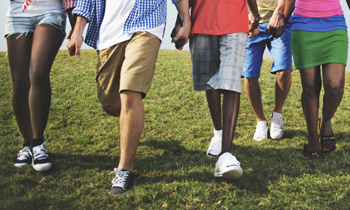 Sever’s disease is a condition that only affects children because their growth plate is still in the process of maturing. A majority of the children affected by Sever’s disease participate in sports and are between the ages of 10 and 15. This condition causes inflammation around the growth plate of the heel bone, which is still growing. The extra stress placed on the foot during sports activities is usually what triggers Sever’s disease. Pain becomes present in the back of the heel, which becomes more sensitive when pressure is applied during actions like running or jumping. Children might develop a minor limp, and they will usually complain of painful sensations in the heel area. If you think your child might have Sever’s disease, it is recommended you bring them to a podiatrist to learn more about the condition and how it can be treated.
Sever’s disease is a condition that only affects children because their growth plate is still in the process of maturing. A majority of the children affected by Sever’s disease participate in sports and are between the ages of 10 and 15. This condition causes inflammation around the growth plate of the heel bone, which is still growing. The extra stress placed on the foot during sports activities is usually what triggers Sever’s disease. Pain becomes present in the back of the heel, which becomes more sensitive when pressure is applied during actions like running or jumping. Children might develop a minor limp, and they will usually complain of painful sensations in the heel area. If you think your child might have Sever’s disease, it is recommended you bring them to a podiatrist to learn more about the condition and how it can be treated.
Sever's disease often occurs in children and teens. If your child is experiencing foot or ankle pain, see Dr. Charles Marchese from Manalapan Foot & Ankle. Our doctor can treat your child’s foot and ankle needs.
Sever’s Disease
Sever’s disease is also known as calcaneal apophysitis, which is a medical condition that causes heel pain I none or both feet. The disease is known to affect children between the ages of 8 and 14.
Sever’s disease occurs when part of the child’s heel known as the growth plate (calcaneal epiphysis) is attached to the Achilles tendon. This area can suffer injury when the muscles and tendons of the growing foot do not keep pace with bone growth. Therefore, the constant pain which one experiences at the back of the heel will make the child unable to put any weight on the heel. The child is then forced to walk on their toes.
Symptoms
Acute pain – Pain associated with Sever’s disease is usually felt in the heel when the child engages in physical activity such as walking, jumping and or running.
Highly active – Children who are very active are among the most susceptible in experiencing Sever’s disease, because of the stress and tension placed on their feet.
If you have any questions, please feel free to contact our office located in Manalapan, NJ . We offer the newest diagnostic and treatment technologies for all your foot and ankle injuries.
Sever's disease, also known as calcaneal apophysitis, is a medical condition that causes heel pain in children’s feet while they’re growing. Sever's disease occurs most commonly in boys and girls between the ages of 8 and 14.
Sever's disease occurs when the child’s growth plate, or the calcaneal epiphysis, an area attached to the Achilles tendon, is injured or when the muscles and tendons of the growing foot do not keep pace with bone growth. The result is constant pain experienced at the back of the heel and the inability to put any weight on the heel. This forces the child to bear weight on their toes while walking. When a toe gait develops, the child must change the way they walk to avoid placing weight on the painful heel. If this is not properly addressed, this can lead to further developmental problems.
The most common symptom of Sever's disease is acute pain felt in the heel when a child engages in physical activity such as walking, jumping or running. Children who are active athletes are among the group most susceptible to experiencing Sever's disease. This is due to the extreme stress and tension placed on their growing feet. The rolling movement of the foot during walking or running and obesity are both additional conditions linked to causing Sever's disease.
The first step in treating Sever's disease is to rest the foot and leg and avoid physical activity. Over the counter pain-relieving and anti-inflammatory medications can be helpful for reducing the amount of heel pain. A child with Sever's disease should also wear shoes that properly support the heel and the arch of the foot. Consider purchasing orthotic shoe inserts which can help support the heel and foot while it is healing. Most patients with Sever's disease symptoms report an eventual elimination of heel pain after wearing orthotic insoles that support the affected heel.
Sever's disease may affect either one heel or both. It is important for a child experiencing heel pain to be examined by a foot doctor who can apply the squeeze test. The squeeze test compresses both sides of the heel in order to determine if there is intense pain. Discourage any child diagnosed with Sever's disease from going barefoot as this can intensify the problem. Apply ice packs to the affected painful heel two or three times a day for pain relief.
Exercises that help stretch the calf muscles and hamstrings are effective at treating Sever's disease. An exercise known as foot curling has also proven to be very effective at treating Sever's disease. When foot curling, the foot is pointed away from the body, then curled toward the body to help stretch the muscles. The curling exercise should be done in sets of 10 or 20 repetitions and repeated several times throughout the day.
Treatment methods can continue for at least 2 weeks and as long as 2 months before the heel pain completely disappears. A child can continue doing daily stretching exercises for the legs and feet to prevent Sever’s disease from returning.
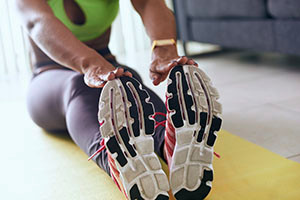 The majority of people who enjoy the sport of running or jogging have a fear of incurring an injury. If this should happen, thoughts about gaining weight, or losing the feeling of heightened endorphins may persist. Avoiding this may be possible if proper stretching techniques are performed before any running activity begins. When the calf muscles are stretched, Achilles tendinitis may be prevented, and this may be accomplished by lowering and raising the heels while standing on a step. A common injury many runners endure is known as shin splints, and this may become evident when there is pain in the lower leg. When the correct shoes are worn, this injury may be avoided. The condition that is referred to as patellar tendinitis may occur during running and jumping activities. This may be prevented by strengthening the feet and legs properly before engaging in a particular sport. If you would like additional information about how to prevent running injuries, it is suggested to speak to a podiatrist.
The majority of people who enjoy the sport of running or jogging have a fear of incurring an injury. If this should happen, thoughts about gaining weight, or losing the feeling of heightened endorphins may persist. Avoiding this may be possible if proper stretching techniques are performed before any running activity begins. When the calf muscles are stretched, Achilles tendinitis may be prevented, and this may be accomplished by lowering and raising the heels while standing on a step. A common injury many runners endure is known as shin splints, and this may become evident when there is pain in the lower leg. When the correct shoes are worn, this injury may be avoided. The condition that is referred to as patellar tendinitis may occur during running and jumping activities. This may be prevented by strengthening the feet and legs properly before engaging in a particular sport. If you would like additional information about how to prevent running injuries, it is suggested to speak to a podiatrist.
All runners should take extra precaution when trying to avoid injury. If you have any concerns about your feet, contact Dr. Charles Marchese of Manalapan Foot & Ankle. Our doctor will treat your foot and ankle needs.
How to Prevent Running Injuries
There are a lot of mistakes a runner can make prior to a workout that can induce injury. A lot of athletes tend to overstretch before running, instead of saving those workouts for a post-run routine. Deep lunges and hand-to-toe hamstring pulls should be performed after a workout instead of during a warmup. Another common mistake is jumping into an intense routine before your body is physically prepared for it. You should try to ease your way into long-distance running instead of forcing yourself to rush into it.
More Tips for Preventing Injury
If you have any questions, please feel free to contact our office located in Manalapan, NJ . We offer the newest diagnostic and treatment technologies for all your foot care needs.
Over half of all runners encounter at least one injury per year. The reason for this is because many runners do not train properly. Injuries are almost inevitable due to the physical stress that running causes. While our bodies are great at adapting to the stress, it can only handle it in small doses. Injuries occur when the stress is applied too quickly for the body to handle, causing something within it to break down. With each step you take, your leg is absorbing two or three times your body’s weight.
Some of the most popular running injuries are shin splints, plantar fasciitis, Achilles tendinitis, and stress fractures. Shin splints cause pain along the inside or outside of the shins, and this pain is usually felt at the beginning of a run. The condition itself is defined as an inflammation of the muscles or tendons located around the shinbone. To treat shin splints, it is advised that you ice the shin area and stretch the calf muscles. To prevent this injury, you should slowly increase the distance you plan on running, instead of jumping into a more strenuous routine.
Achilles tendinitis is another common injury and it feels like pain along the back of the leg, toward the heel. This condition is defined as an inflammation of the Achilles which is the largest tendon in the body. The Achilles is responsible for connecting your calf muscles to the heel bone and it is caused by tight calf muscles. If you want to treat this injury, you should take a break from running to cross train with a low-impact activity.
There are a lot of common mistakes runners make that are causing them to experience injury. One mistake is stretching too much prior to warming up. If you plan to go on a run, you should warm up with a gentle 3-5-minute walk followed by a 5-minute run-walk. Another common mistake is jumping into a routine too quickly. Consequently, you should incorporate cross-training into your routine. If you are looking to get active, you should slowly weave running into an activity you are currently participating in. For example, you can try bike riding for 40 minutes followed by a 10-minute run.
Another way to prevent running injuries is to choose shoes that are appropriate for running. There are certain things you should look for when buying a new pair of running shoes. An important factor in these sneakers is flexibility. Running shoes should be capable of bending and flexing at the forefoot. However, you should not be able to bend the entire shoe in half with ease because this is a sign that the shoe does not have enough structure. Additionally, you should look for the fit of the running shoes you want to purchase. It is best to visit a specialty running shoe store to have your feet properly sized. Choosing shoes that fit properly can prevent many foot ailments.
If you are suffering from any pain from running injuries, you should make an appointment with your podiatrist to discover the underlying cause of your pain. He or she will be able to help treat your condition in the best way possible.
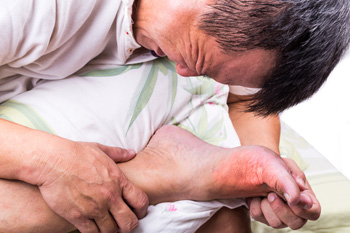 There are numerous causes and types of foot pain that many patients may experience over the course of their lifetimes. These may include fractures, sprains, injuries to the Achilles tendon, or objects that may have become imbedded. A type of arthritis which is referred to as gout can cause severe pain and discomfort, and this may last for several days. If shoes are worn that fit incorrectly, corns or blisters may develop, and this may cause pain while walking. Research has shown warts may cause discomfort, and this may be especially true if the wart grows into the heel of the foot, which is known as a plantar wart. If the nail should grow into the surrounding skin, tenderness and redness will often accompany this ailment. Additionally, a common foot condition that is known as plantar fasciitis may cause extreme pain and discomfort, and this may be a result of inflammation of the band of tissue that is located on the sole of the foot. It is strongly suggested that you seek the counsel of a podiatrist who can provide a proper diagnosis and begin correct treatments for any type of foot pain.
There are numerous causes and types of foot pain that many patients may experience over the course of their lifetimes. These may include fractures, sprains, injuries to the Achilles tendon, or objects that may have become imbedded. A type of arthritis which is referred to as gout can cause severe pain and discomfort, and this may last for several days. If shoes are worn that fit incorrectly, corns or blisters may develop, and this may cause pain while walking. Research has shown warts may cause discomfort, and this may be especially true if the wart grows into the heel of the foot, which is known as a plantar wart. If the nail should grow into the surrounding skin, tenderness and redness will often accompany this ailment. Additionally, a common foot condition that is known as plantar fasciitis may cause extreme pain and discomfort, and this may be a result of inflammation of the band of tissue that is located on the sole of the foot. It is strongly suggested that you seek the counsel of a podiatrist who can provide a proper diagnosis and begin correct treatments for any type of foot pain.
Foot Pain
Foot pain can be extremely painful and debilitating. If you have a foot pain, consult with Dr. Charles Marchese from Manalapan Foot & Ankle. Our doctor will assess your condition and provide you with quality foot and ankle treatment.
Causes
Foot pain is a very broad condition that could be caused by one or more ailments. The most common include:
Diagnosis
To figure out the cause of foot pain, podiatrists utilize several different methods. This can range from simple visual inspections and sensation tests to X-rays and MRI scans. Prior medical history, family medical history, and any recent physical traumatic events will all be taken into consideration for a proper diagnosis.
Treatment
Treatment depends upon the cause of the foot pain. Whether it is resting, staying off the foot, or having surgery; podiatrists have a number of treatment options available for foot pain.
If you have any questions, please feel free to contact our office located in Manalapan, NJ . We offer the newest diagnostic and treatment technologies for all your foot care needs.